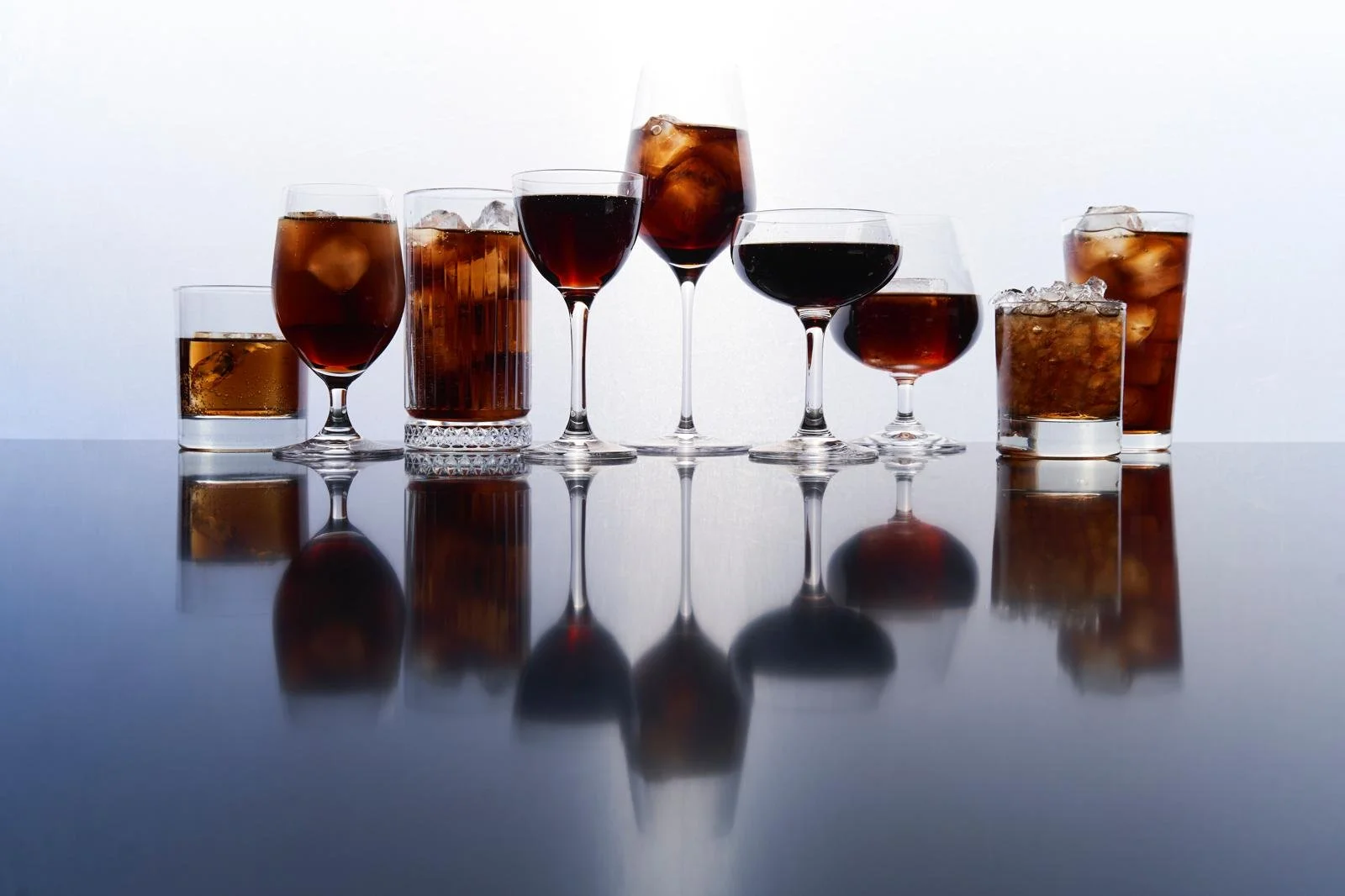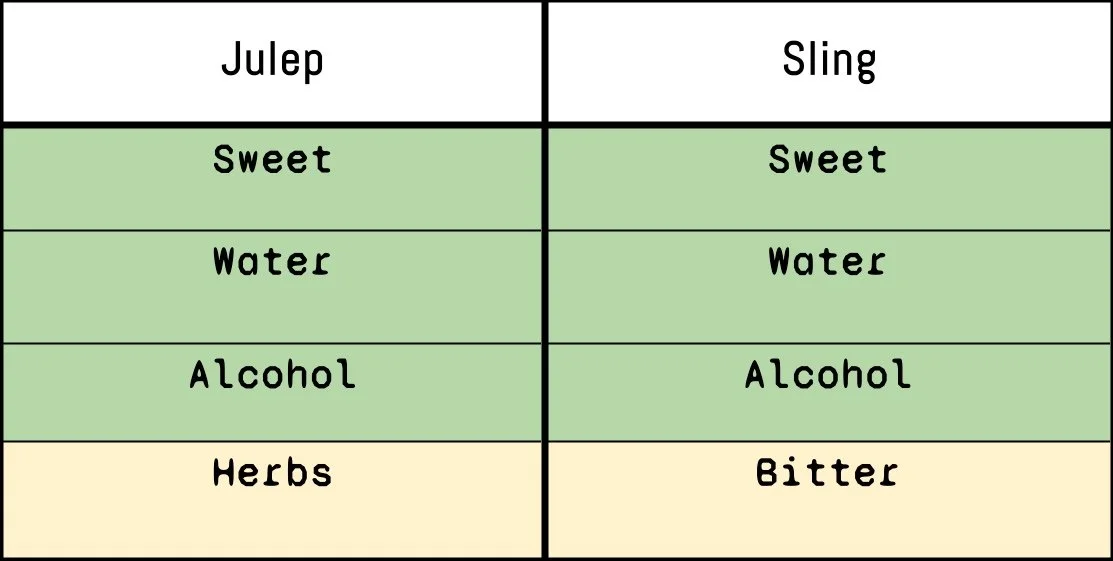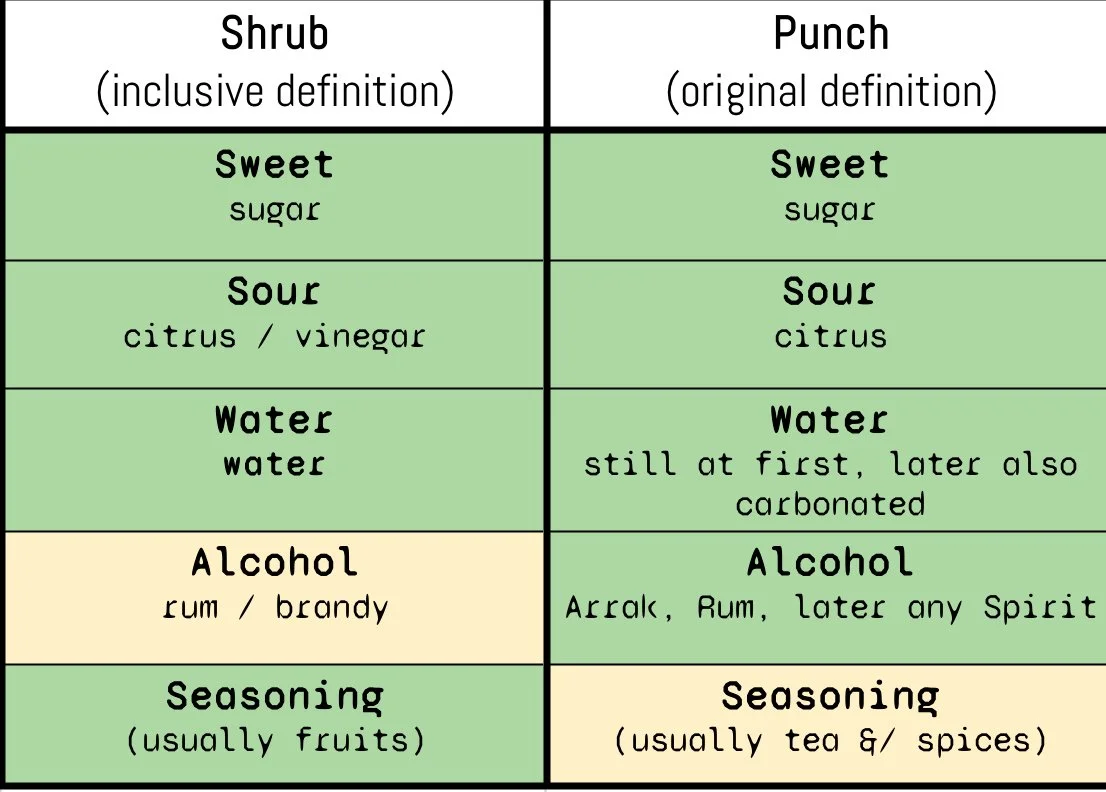What Is a Cocktail?
“What is a cocktail?”
I was recently asked this deceptively simple question. It turns out the answer is a lot more complicated than it seems. The more I thought about it, the more difficult it was to explain.
True, the answer to that question could be as simple as the definition you find in a dictionary: “A mixed drink, usually alcoholic”. Some dictionaries even add an element of temperature. Merriam-Webster offers this definition: “A usually iced drink of wine or distilled liquor mixed with flavoring ingredients”.
But while that can give us a good start, consulting a dictionary is way too vague. After all, what is that mysterious “mixed” part? What is this drink made of except for alcohol? And what is meant by “flavouring ingredients”? Surely, you cannot just mix alcohol with another drinkable liquid and call that a cocktail!
Or can you? What are the limits? Where are the differences?
The six S’s
When I first started bartending I was taught an order in which ingredients were to be poured into the glass. The ingredients were categorised into “Die fünf ‘S’” (german for: The five ‘S’s”) in a particular order:
Süße SWEET
Säure SOUR
Sahne CREAM
Saft JUICE
Spirituose SPIRIT
So while building a drink, you follow this order. If a drink doesn’t include a certain ingredient, you skip to the next. If you are making a Whiskey Sour, you start with the sugar, then the lemon, then the Whiskey and skip the cream and juice.
Over the years, my experience made me adopt a sixth 'S': Soda, because you should never forget the role of water. A word to the wise though, DO NOT TRY TO SHAKE ANYTHING CARBONATED Shakers are not made to withstand that kind of pressure. Your cocktail attempt will explode on you.
This order of ingredient components is not only helpful for reducing mistakes and keeping track of the drinks you are making, especially if you are making 10 or 20 at the same time. It also gives us a couple of building blocks for a Cocktail - DNA strands if you will.
While examining this DNA can provide a checklist for the definition of a cocktail, the six S’s have their limitations. They ignore other aspects of the cocktail. What role do ingredients like Bitters or egg whites or even a Liqueur that is both spirit and sweetener have? Do you treat them as building blocks too? Most importantly, how many of these building blocks are needed for a mix to be called a Cocktail?
To understand this we have to go back in time. The first written definition of the word Cocktail is found in 1806:
„[A] Cock-tail, then, is a stimulating liquor,
composed of spirits of any kind, sugar, water,
and bitters – it is vulgarly called a bittered sling,
and is supposed to be an excellent electioneering
potion inasmuch as it renders the heart
stout and bold, at the same time that it fudd-
les the head. [...] a person having swallowed a
glass of it, is ready to swallow anything else.“
– The Balance, and Columbian Repository, 13. May 1806[1]
According to this, the term “Cocktail” used to describe an alcoholic beverage that contained a spirit, sugar, water, and a bitter. Is that the minimum of what a Cocktail is?
By this definition Campari would be a Cocktail, right? But is a Vodka Martini without Vermouth, so water and vodka, also a Cocktail? And when did the juices and creams get added to the mix? Well, that happened before the term “Cocktail” even existed!
The secrets of flavour balance and creating drinkable beverages, especially with alcohol, is much older than 1806. It finds its origins in Shrubs and Punches and also in Juleps and Slings. These are terms we take for granted as Cocktail Categories, but in them is where we have to look to understand not just one, but all Cocktails.
Juleps & Slings
A Julep (or Jewlip or Julab) used to be a medicinal mixture of sugar, water and flowers until the word was used jokingly to describe what was then known to be a Sling, namely a Spirit with water and sugar. This is what David Wondrich calls “the irreducible minimum of true mixology” (Imbibe!: 172). It makes sense that when you add bitters to this you are creating a “bittered sling” or a cocktail or, as we now call it, an Old Fashioned style cocktail. But the Julep also developed to become the cocktail we know today: a Sling with herbs.
A subgroup of this Julep is called Smashes. The difference between them and Juleps is the method of preparation. As the name suggests, the herbs were smashed while shaking. This drink category only started gaining popularity once acidity was added to the mix in the 1990s.
A similar thing happened in the 1800s. The Sling, which was basically synonymous to a Toddy or a Sangaree, traveled from America to England. There, acidity and, later, bitters and tinctures were added, essentially turning the Sling into a Punch. This little fact raises a philosophical question in the world of cocktails: Is the Singapore Sling which makes this category so famous today, actually a punch?
Shrubs and Punches
Shrubs and Punches, on the other hand, use at least that one extra building block: Acidity! Though you can mean two things when you say shrub (we will pick up on this in another post), both rely on the balance of sweet and sour. Unlike Shrubs, Punches usually included spices and sometimes used teas instead of water. In other words, they were seasoned to add flavour, depth and complexity.
Milk Punch both ways and Egg Drinks:
There is yet another type of Punch. One that is trending in today’s world of mixology. It is the so-called Milk punch. Similar to the Shrub, what was meant with that word was dichotomous: The milk punch in a glass was very different from a milk punch in a bottle or bowl. The former is what we now call a Cream Cocktail. The latter is a clarified mix that is ready to drink and super ideal for faster service – or just to have at home for when you need a quick fix.
But that is not the only difference between them. The building blocks differ slightly, although both introduce milk or Fat as a building block.
To clarify a Milk Punch, acidity, usually lemon juice, is added, to make the milk curdle, allowing the mixture to be filtered through these curds of cream. In cream cocktails or Egg drinks, the cream or other fatty ingredients like egg yolks are added to balance the sweet components, leaving you with a creamy, sweet drink that should be drunk quickly before the alcohol causes coagulation.
This means that the term Punch, which we accepted to come from the Sanskrit word for ‘five’ - use that fun fact at your next dinner party - can in fact describe a drink that has six building blocks. To summarize: A Punch is a drink that consists of a spirit, water, seasoning and a sweet source either balanced with acidity or a fatty source or even both. These are the building blocks that make its DNA:
Temperature and Texture:
Let’s return to Merriam Webster’s addition of temperature to the definition of the cocktail. While temperature does make a difference, a cocktail does not, as Merriam Webster claims, have to be cold to be considered one. A cocktail can be hot or cold. Just like a Punch. Or a Sling. Or even a Toddy, which is most often preceded with the word ‘hot’ (Check out Imbibe for more information!)
And while milk and egg yolks count as the Fat components of a drink, they also change the texture. Though egg whites contain no fat whatsoever, they also play a part in changing the texture however it does very little for the flavour balance. Texture in my opinion is a very important factor to consider when making or creating a cocktail. For the purpose of defining what a cocktail is however, texture is not indicative.
The Sum of Its Parts
So what are the DNA strands of a Cocktail? Assuming we understand the ingredients, combining the DNA of Slings and Punches provides you with the building blocks you find in every cocktail, the ones that add the fun mystery and extra flavour to the drink as seasoning. The herbs in a julep and the bitters in a bittered Sling would qualify and so would flavoured syrups, like the raspberry syrup in a Gin Punch, or the red wine in a New York Sour and even the cranberry juice in a Cosmopolitan.
But again, it raises more questions because of the ingredients involved. To reiterate one I already brought up, can a Vodka Martini Cocktail without Vermouth or bitters still be a Cocktail? If we accept that the irreducible minimum of a Cocktail is a Sling, then no! Shaking a liqueur however would qualify. So a shaken Vodka is not a Cocktail but a Campari Shakerato is, since the Campari incorporates four of the building blocks of a Bittered Sling: Sweet, alcohol, bitter and seasoning. And by shaking it you are adding dilution – water.
What is important here is the quantity of the ingredient in use. Angostura Bitters is probably the most famous cocktail bitter of all. Usually, a dash or a few is added to a drink to balance the sweet, but also to give it extra flavour. Yet in the Trinidad Sour for example, the Angostura is the Alcohol component. In this case it acts as two building blocks in one. This means that the building blocks are not synonymous with ingredients.
And now we can finally address the question that started all of this. What is a Cocktail? The answer is a balance. A balance between Alcohol, Water and at least one of the other building blocks. And it has to be noted that while Sour and Seasoning can balance a drink without the Sweet, Fat cannot! Becoming more familiar with all the types and subtypes of those delicately balanced, shaken, stirred, mixed, etc., drinks, which we love, is the only way to really understand the term. Yes, it is a mixture. But, like so many complicated things, it is more than the sum of its parts. And once you understand those parts, it becomes even more delicious.
Sources:
Adam, Helmut, et al. Cocktailian Das Handbuch Der Bar Die Autoren Helmut Adam, Jens Hasenbein, Bastian Heuser ; Gebraut, Gezapft & Serviert von Cocktailian. 2nd ed., Tre Torri Verlag, 2010.
Dietsch, Michael. Shrubs: An Old-Fashioned Drink for Modern Times. The Countryman Press, a Division of W.W. Norton & Company, Independent Publishers since 1923, 2016.
Humanities, Digital. “Postwar Tiki.” Omeka RSS, Santa Clara University, dh.scu.edu/exhibits/exhibits/show/history-usa-mixology/postwar_tiki. Accessed 2 Feb. 2025.
“Cocktail.” Merriam-Webster.com Dictionary, Merriam-Webster, https://www.merriam-webster.com/dictionary/cocktail. Accessed 2 Feb. 2025.
Petro, Brian. “The History of Egg Cocktails, Unscrambled.” Alcohol Professor, Alcohol Professor, 14 June 2021, www.alcoholprofessor.com/blog-posts/blog/2016/03/24/the-history-of-egg-cocktails-unscrambled.
“Posset.” Wikipedia, Wikimedia Foundation, 2 Dec. 2024, en.wikipedia.org/wiki/Posset.
Wondrich, David. Imbibe!: From Absinthe Cocktail to Whiskey Smash, a Salute in Stories and Drinks to “Professor” Jerry Thomas, Pioneer of the American Bar. A Perigee Book, Published by the Penguin Group, 2015.




